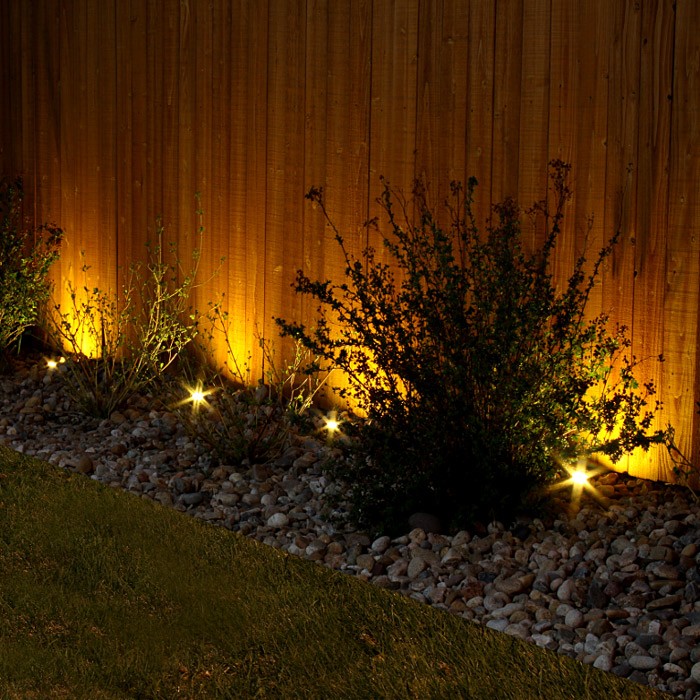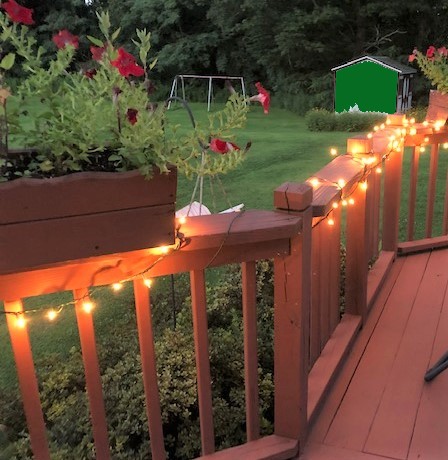Think about it: Most of your guests (and if your home is on the market, many would-be buyers) see your home only in the evening, when its best features may be lost in the shadows. Well-executed outdoor lighting enhances architectural detail and plays up landscape features, casting your home in the best possible light and adding an abundance of curb appeal.
 You can accent trees,
shrubs and flower beds at night to attract the buyer’s eye. That way, even
though it is dark outside, they’re still noticing the high points of your
landscape. You can use solar fixtures that soak up sunlight during the day and
light up at night. Otherwise, you can buy light fixtures that draw on power
from the house or use batteries. These decisions depend on your budget and what
works best for your landscape design.
You can accent trees,
shrubs and flower beds at night to attract the buyer’s eye. That way, even
though it is dark outside, they’re still noticing the high points of your
landscape. You can use solar fixtures that soak up sunlight during the day and
light up at night. Otherwise, you can buy light fixtures that draw on power
from the house or use batteries. These decisions depend on your budget and what
works best for your landscape design.
Outdoor lighting also adds value. In all price ranges, lighting for security is important — both to protect against intruders and falls. Here are the elements of successful outdoor lighting.
Mimicking moonlight
Much of the success of exterior lighting hinges on its
design. Hang around lighting designers long enough and you’ll hear a lot of
talk about “moonlight effect.” That’s a naturalistic look that features light
no more intense than that of a full moon, but still strong enough to make
beautiful shadows and intense highlights.
Other techniques outdoor lighting designers use:
Have a focus: The entryway is often center stage, a way of saying, “Welcome, this way in.”

Highlight trees: Whether illumined from below or given presence by a light mounted in the tree itself, trees make stunning features.
Use uplights: Uplighting is dramatic because we expect light to shine downward. Used in moderation, it’s a great way to highlight architectural and landscaping features.
Vary the fixtures: While spots and floods are commonly used, landscape designers turn to a wide range of fixtures, area lights, step lights, and bollards or post lights.
Stick to warm light: A rainbow of colors are possible, but most designers avoid anything but warm white light, preferring to showcase the house and its landscape rather than create a light show.
Orchestrate: A timer, with
confirmation from a photocell, brings the display to life as the sun sets. At
midnight it shuts shut down everything but security lighting. Some homeowners
even set the timer to light things up an hour or so before dawn.
Adding safety and security
Falls are the foremost cause of home injury, according to the Home Safety Council. Outdoors, stair and pathway lighting help eliminate such hazards. Often safety and security can be combined. For example, motion-detecting security lighting mounted near the garage provides illumination when you get out of your car at night; the same function deters intruders.
Motion detecting switches can also be applied to landscape
lighting to illumine shadowy areas should anyone walk nearby.
Even the moonlight effect has a security function: Soft,
overall landscape lighting eliminates dark areas that might hide an intruder,
exposing any movement on your property. Overly bright lights actually have a
negative effect, creating undesirable pockets of deep shadow.
Create an inviting ambiance to your home.
You’ll be glad you did.




